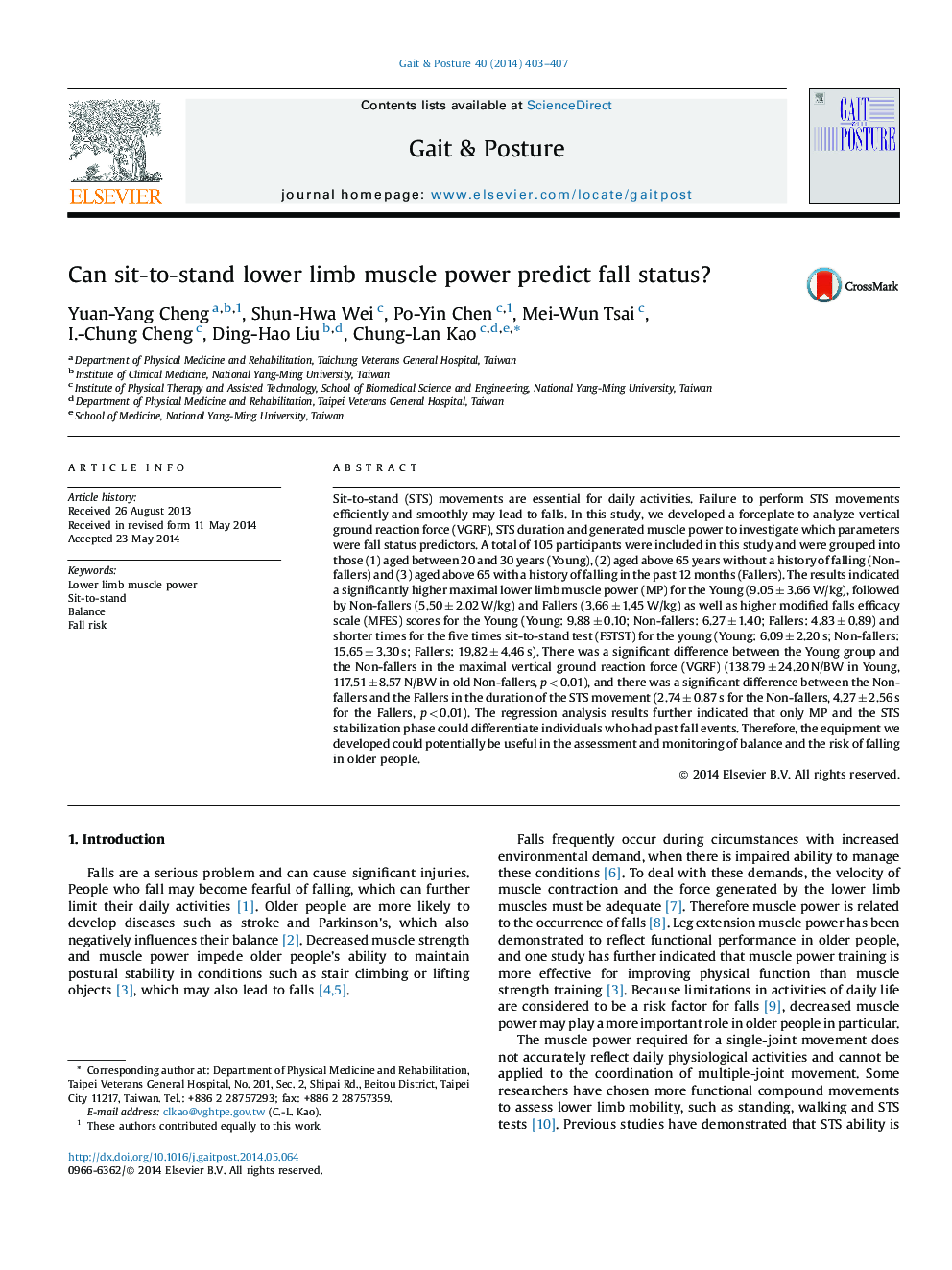| کد مقاله | کد نشریه | سال انتشار | مقاله انگلیسی | نسخه تمام متن |
|---|---|---|---|---|
| 4056201 | 1265644 | 2014 | 5 صفحه PDF | دانلود رایگان |
• Lower limbs muslce power decreases with advancing age.
• Duration of STS movements differentiates Fallers and Non-fallers.
• Maximal muscle power and the STS stabilization phase predictsfall status.
Sit-to-stand (STS) movements are essential for daily activities. Failure to perform STS movements efficiently and smoothly may lead to falls. In this study, we developed a forceplate to analyze vertical ground reaction force (VGRF), STS duration and generated muscle power to investigate which parameters were fall status predictors. A total of 105 participants were included in this study and were grouped into those (1) aged between 20 and 30 years (Young), (2) aged above 65 years without a history of falling (Non-fallers) and (3) aged above 65 with a history of falling in the past 12 months (Fallers). The results indicated a significantly higher maximal lower limb muscle power (MP) for the Young (9.05 ± 3.66 W/kg), followed by Non-fallers (5.50 ± 2.02 W/kg) and Fallers (3.66 ± 1.45 W/kg) as well as higher modified falls efficacy scale (MFES) scores for the Young (Young: 9.88 ± 0.10; Non-fallers: 6.27 ± 1.40; Fallers: 4.83 ± 0.89) and shorter times for the five times sit-to-stand test (FSTST) for the young (Young: 6.09 ± 2.20 s; Non-fallers: 15.65 ± 3.30 s; Fallers: 19.82 ± 4.46 s). There was a significant difference between the Young group and the Non-fallers in the maximal vertical ground reaction force (VGRF) (138.79 ± 24.20 N/BW in Young, 117.51 ± 8.57 N/BW in old Non-fallers, p < 0.01), and there was a significant difference between the Non-fallers and the Fallers in the duration of the STS movement (2.74 ± 0.87 s for the Non-fallers, 4.27 ± 2.56 s for the Fallers, p < 0.01). The regression analysis results further indicated that only MP and the STS stabilization phase could differentiate individuals who had past fall events. Therefore, the equipment we developed could potentially be useful in the assessment and monitoring of balance and the risk of falling in older people.
Journal: Gait & Posture - Volume 40, Issue 3, July 2014, Pages 403–407
